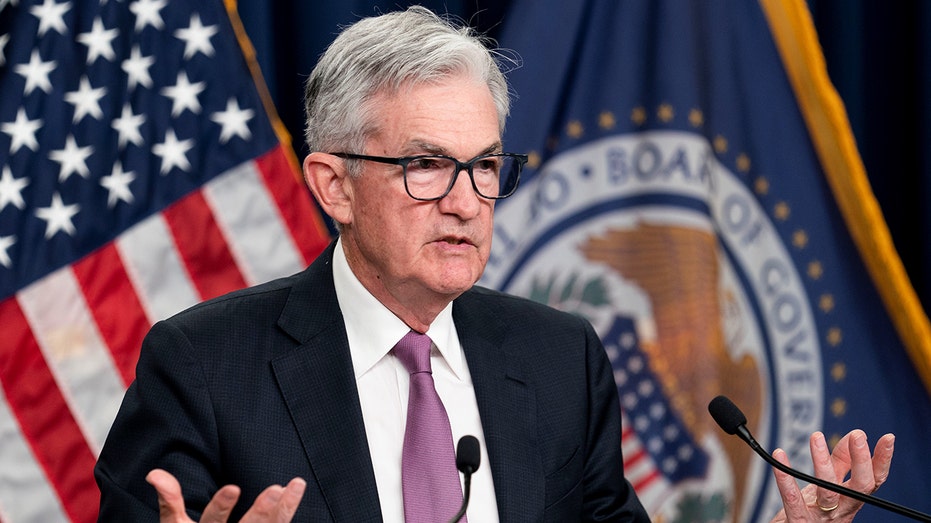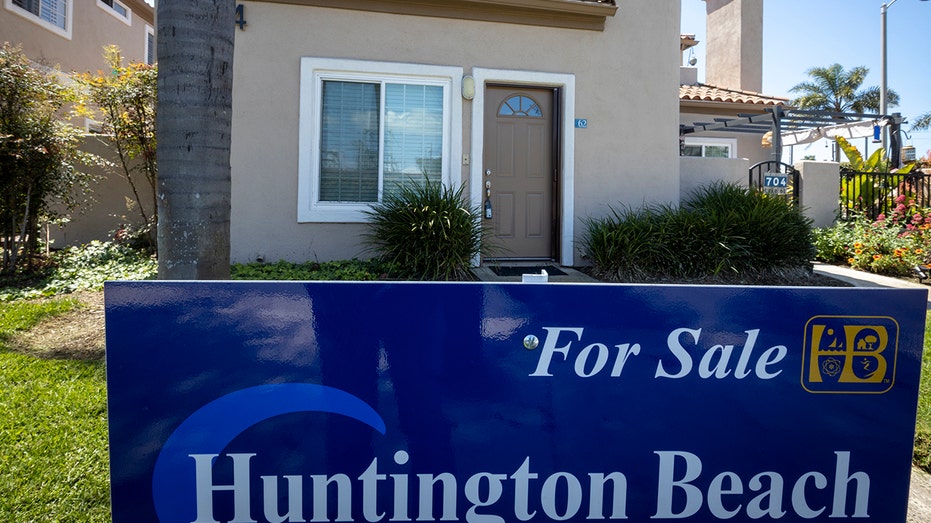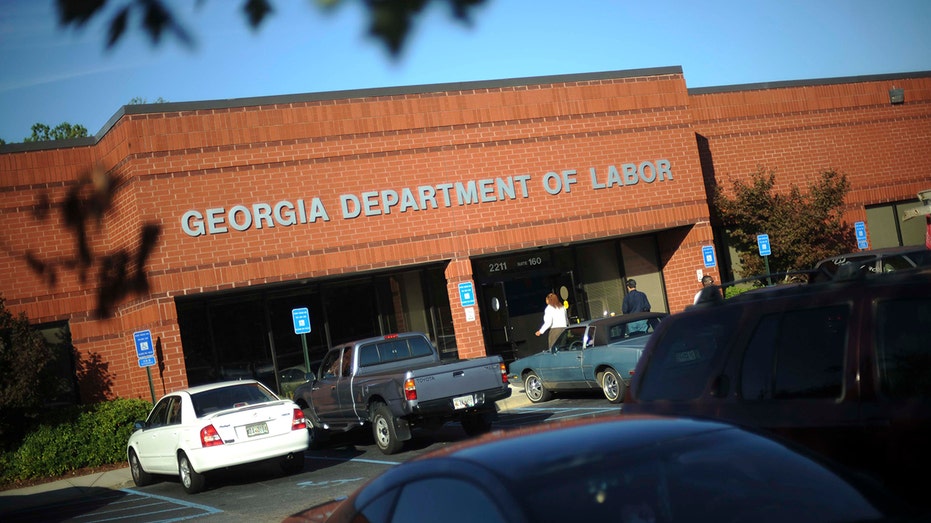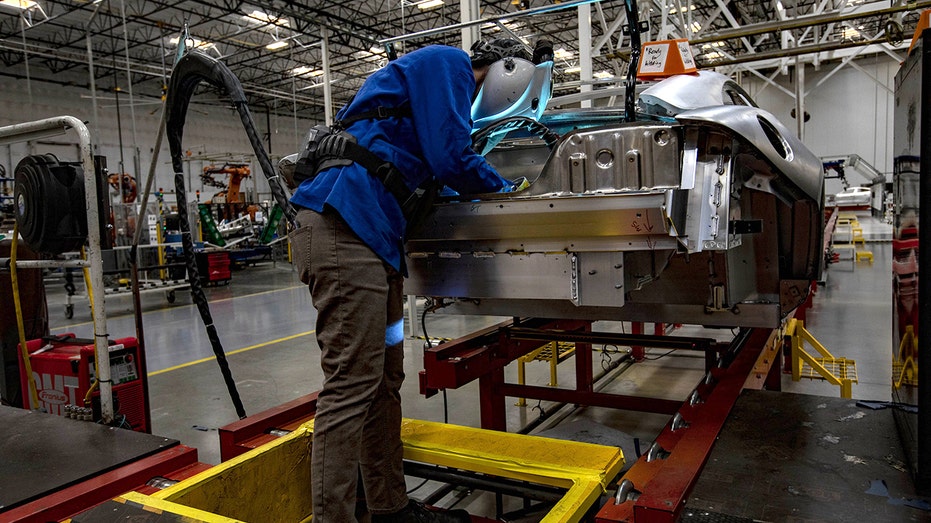CEOs warn tough recession coming, home sales lower and more: Tuesday's 5 things to know
On Tuesday, the markets will be reacting to key economic reports including job openings and factory orders
Here are the key events taking place on Tuesday that could impact trading.
CEOs ON RECESSION: America’s CEOs are becoming an increasingly more pessimistic group as inflation rages and as the Federal Reserve keeps hiking interest rates, according to a new survey by KPMG.
"Ninety-one percent of CEOs surveyed believe there will be a recession in the next 12 months. Only one-third of those CEOs believe it will be a short and mild recession. Some CEOs are considering workforce reductions, roughly half of the CEOs are thinking about whether they need to reduce workforce," KPMG CEO Paul Knopp told FOX Business.
Knopp also explained that of the 400 large company C Suite executives surveyed, many believe the Fed has a tougher balancing act in controlling this economic downturn.
THE STRONG US DOLLAR IS A DOUBLE-EDGED SWORD

Federal Reserve Chair Jerome Powell attends a press conference in Washington, D.C., on July 27, 2022. (Liu Jie/Xinhua via Getty Images)
"They're paying a lot of attention to what the Fed is saying around the kind of weakness or sustained weakness they need to create, the cooling they need to create in the economy to beat the corrosive effects of inflation, which can really, in the long term, damage the economy significantly," he added.
U.S. policymakers last month inked the third consecutive 75-basis-point rate hike of the year and laid the roadmap for more of the same in the coming months. In a twist, Federal Reserve Chairman Jerome Powell also reversed his belief that the economy could avoid a hard landing or sharp downturn.
"The chances of a soft landing are likely to diminish to the extent that policy needs to be more restrictive or restrictive for longer," he said during his press conference following the September meeting.
Policymakers also signaled the job market may need to take a hit. They lifted their forecast for the annual 2023 unemployment rate to 4.4% from 3.8%.
On Friday, investors will get the September jobs report, which is expected to show that employers added 250,000 positions while unemployment held at 3.7%.
MEDIAN HOME SALES: Home prices in the U.S. are sinking at the fastest monthly pace since the Great Recession, evidence that rising mortgage rates are rapidly slowing activity in the housing market.
Median home prices fell 0.98% in August from a month earlier, following a 1.05% drop in July, mortgage analytics firm Black Knight said in a report Monday.
"Together they represent two straight months of significant pullbacks after more than two years of record-breaking growth," said Black Knight Data & Analytics President Ben Graboske.
The price declines are the sharpest since January 2009, when the economy was in the midst of the worst recession since the Great Depression, according to Black Knight. Median home prices are down 2% since their June peak.
HOW HOUSING IS FUELING RED-HOT INFLATION

A townhome for sale in Huntington Beach, California, listed at $1,100,000 in April of 2022. (Allen J. Schaben / Los Angeles Times via Getty Images) (Getty Images)
"The only months with materially higher single-month price declines than we’ve seen in July and August were in the winter of 2008, following the Lehman Brothers bankruptcy and subsequent financial crisis," Graboske said.
The once red-hot housing sector is in the midst of a severe correction as the Federal Reserve raises interest rates at the fastest pace in decades.
The Federal Reserve raised its benchmark interest rate by 75 basis points for the third straight month in September, following similar rate hikes in June and July — the most aggressive series of increases since 1994.
The move puts the key benchmark federal funds rate at a range of 3% to 3.25%, the highest since before the 2008 financial crisis. It also marks the fifth consecutive rate increase this year.
EMPLOYMENT DATA INCOMING: September’s employment data is slated for release at 8:30 a.m. ET Friday.
The report should provide investors with some idea of the impact that higher borrowing costs are having on growth.
Economists surveyed by Refinitiv say the U.S. economy likely added 250,000 new nonfarm jobs in September. That’s down from 315,000 the previous month and would mark the weakest job growth since December 2020.
While the pace of job growth is slowing, the labor market remains tight with employers reluctant to lay off workers. Jobless claims fell unexpectedly to 193,000 last week, the lowest since April.
CREDIT SUISSE SEEKS TO CALM MARKET JITTERS

Job seekers walk into the Gwinnett office of the Georgia Department of Labor on Tuesday, Oct. 14, 2008. (Chris Rank/Bloomberg via Getty Images) (Getty Images)
The unemployment rate is anticipated to hold steady at 3.7%. It rose unexpectedly in August by 0.2 percentage points as more people entered the workforce. July’s 3.5% unemployment rate matched the pre-pandemic levels of January and February 2020, which were the lowest since May 1969.
For perspective, April 2020’s 14.7% jobless rate surpassed the post-World War II record of 10.8% in November 1982 and was the highest since recordkeeping began in 1948 (The Bureau of Labor Statistics estimates that unemployment rose as high as 24.9% in 1933 during the Great Depression).
Meanwhile, the manufacturing sector likely added 20,000 jobs in September, little-changed from the prior month.
Private sector payrolls are anticipated to rise by 270,000 trailing August’s tally of 308,000 and the lowest since April 2021.
Finally, look for hourly earnings to increase 0.3% for the month and jump 5.1% from September 2021. That would be the slowest annual growth in wages since December, following three consecutive months of 5.2% gains.
It would also mark the sixth straight month of flat or declining annual wage growth from a 2-year high of 5.6% in March, possibly easing concerns about wage inflation.
JOBS, FACTORY ORDER REPORTS: Tuesday will bring updated reports on job openings and factory orders.
Beginning at 10 a.m. ET, the latest Job Openings and Labor Turnover Survey will be released.
The Labor Department is expected to say that there were 10.775 million job openings available at the end of August. That’s down from July, when openings rose unexpectedly to 11.239 million.
If the August number comes in as expected, it will mark the fourth month in the last five of falling job openings, down from a record 11.855 million in March. It would also mark the lowest level of opening since September 2021.

A welder welds a Karma GS-6 electric vehicle on the production line inside the Karma Automotive LLC plant in Moreno Valley, California, on Friday, Aug. 13, 2021. ( Jill Connelly/Bloomberg via Getty Images / Getty Images)
Even so, the number of jobs that need to be filled is about double the number of people looking for work (6.01 million in August per the Bureau of Labor Statistics), signaling an extremely tight labor market as employers struggle to fill positions.
At the same time, the Commerce Department is expected to say factory orders were unchanged in August, after a surprise 1% decline in July.
FOURTH-QUARTER BEGINS: U.S. stocks started the new quarter higher, a tentative sign of relief for investors after a long and punishing stretch of down days.
The Dow Jones Industrial Average climbed 765.38 points, or 2.7%, to 29490.89. The S&P 500 added 92.81 points, or 2.6%, to 3678.43 and the Nasdaq Composite rose 239.82 points, or 2.3%, to 10815.43.
Both the S&P and Nasdaq notched their best first day of any quarter since 2009, according to Dow Jones Market Data.
| Ticker | Security | Last | Change | Change % |
|---|---|---|---|---|
| I:DJI | DOW JONES AVERAGES | 49590.2 | +86.13 | +0.17% |
| SP500 | S&P 500 | 6977.27 | +10.99 | +0.16% |
| I:COMP | NASDAQ COMPOSITE INDEX | 23733.904411 | +62.56 | +0.26% |
The broad-based gains came after stocks closed out a losing week, month and quarter on Friday, when all three indexes closed at their lowest levels of the year.
Stocks have sustained deep losses for the first nine months of the year as central bank officials have increasingly made clear that interest-rate increases and monetary tightening will continue.
CLICK HERE TO READ MORE ON FOX BUSINESS
The Dow last week fell into a bear market, a decline of 20% or more from a recent high.




















